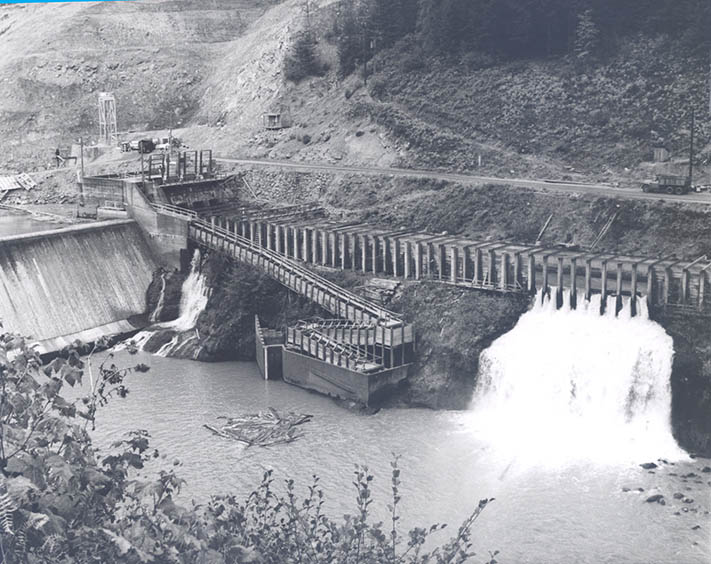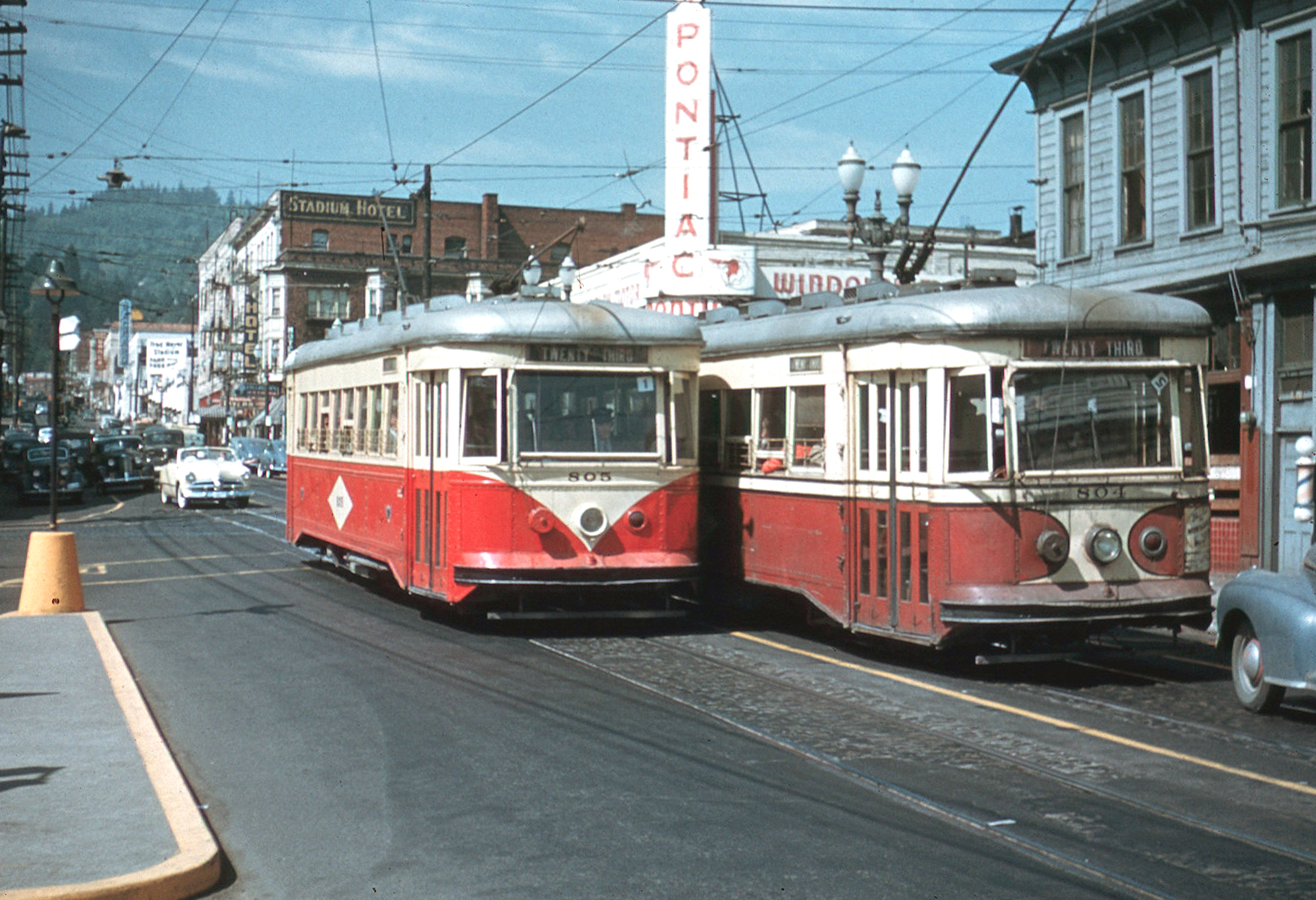Portland Railway Light & Power (PRLP) was created in 1906 through the consolidation of nearly every transportation and power generation utility between Vancouver, Washington, and Salem, Oregon. On May 4, the Portland Oregonian called it the biggest merger in Oregon history, reporting that “every electric light, power, and traction company in the Lower Willamette Valley, including Portland, has been merged into one vast consolidation of interests.”
Before electricity became a common feature of American life, one of its principal uses was for trolleys, and most generation powered those lines. Replacing horse-drawn cars, electric trolleys, and longer interurban lines were a primary transportation method in the late nineteenth and early twentieth centuries. Portland’s system was extensive, providing passenger and freight service throughout the region. Domestic power use was limited, and municipal street lighting and industry created most of the remaining demand.
Prior to PRLP, the region was served by a system of competing trolley and railway companies, many quite localized. They fought over franchise and rights-of-way in an effort to provide service. The Portland Railway Company, the largest of these firms, was formed through merger and consolidation in 1904. Power generation, where there was less competition, was dominated by Portland General Electric (PGE), a successor to the Willamette Falls Electric Company. Under the leadership of individuals such as Parker Morey, Edward Eastham, and hydroelectric engineer Thomas W. Sullivan, PGE owned and operated Station B, the huge powerhouse at the Willamette Falls, along with several steam generation plants.
The rapid growth of the Portland region after 1904, the attention given new technology at the Lewis & Clark Exposition in 1905, and the continuing improvements in lighting and home appliances such as toasters and heaters created an increasing demand for electricity and fueled a search for new generation capacity. Companies like PGE and the Portland Railway Company, backed by eastern capital, were able to expand, but smaller firms struggled for funds to complete new construction and update their equipment.
A primary motive behind the creation of PRLP, at least on the part of the larger firms, was to eliminate competition. For the competitors and the subscribers they served, the merger provided access to capital and the promise of improved service. The largest competitor, Oregon Water Power & Railway Company, was developing the Faraday Powerhouse on the Clackamas River and building a new interurban line from Portland to Estacada, a new city the company had platted. The merger brought the entire Clackamas Valley and its hydro potential into PRLP control. The company finished the Faraday project by 1907 and built a second powerhouse at River Mill in 1911.
PRLP created a uniform trolley system that improved service to the region and promoted suburban growth, while also developing new power generation. Capitalized at $15 million, a staggering sum for the era, PRLP united thirty-six transport and power providers under the ownership of the well-financed Philadelphia-based E.W. Clark and Company. The combined power and transit firm provided trolleys, fast interurban train lines, and electrical generation and distribution systems from Vancouver, Washington, to Salem. Stops on the interurban lines promoted the growth of towns like Estacada and Hillsboro, while giving farmers in Clackamas and Washington Counties easy access to Portland’s market.
Another potential competitor, the Mount Hood Railway Company, began to develop a generation facility on the Little Sandy River, with the intention of providing power and transit service to Hillsboro, Gresham, Fairview, and elsewhere. In 1912, the company, including its trolley lines and the partially completed power plant at Bull Run, merged into PRLP, as well.
PRLP enjoyed huge success throughout the 1910s and 1920s, as improved home lighting, heating, electrical appliances, and other modern conveniences helped turn electricity into a necessary feature of modern life. The company’s transportation business expanded to more than three hundred miles of track and reported 93,900,714 ticketed passengers in 1921.
Competition from Pacific Power and Light (PP&L) and the increased use of automobiles put PRLP on shaky financial footing, and the company was reorganized into two divisions in 1924. In 1930, the trolley system became the Portland Traction Company. The generation and distribution of the electricity portion of PRLP became the Portland Electric Power Company (PEPCO), which in February 1930 became PGE.
-
![Faraday Diversion Dam, 1958]()
Faraday Diversion Dam, 1958.
Faraday Diversion Dam, 1958 Courtesy Oreg. Hist. Soc. Research Lib., Portland General Electric Collection
Related Entries
-
![Faraday Dam and Powerhouse]()
Faraday Dam and Powerhouse
The Faraday Powerhouse, located in Estacada on the Clackamas River, pro…
-
![Portland streetcar system]()
Portland streetcar system
The majority of Portland’s oldest neighborhoods owe their location and …
Related Historical Records
Further Reading
Portland Railway Light & Power. Outing Trips: Portland, Oregon & Vicinity by Trolley. Portland, Ore.: Portland Railway Light & Power Company, 1922.
Robley, R.R. Portland Electric Power Company with its Predecessor and Subsidiary Companies 1860-1935. Portland, Ore.: Portland General Electric Company, 1938.
Wollner, Craig. Electrifying Eden: Portland General Electric 1889-1965. Portland: Oregon Historical Society Press, 1990.





